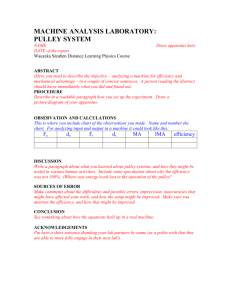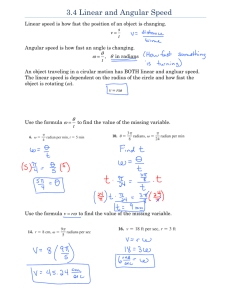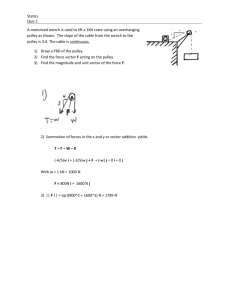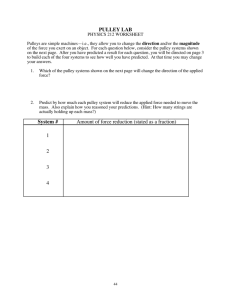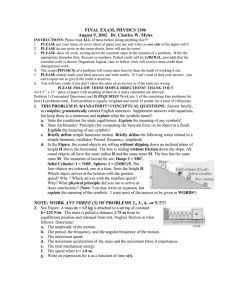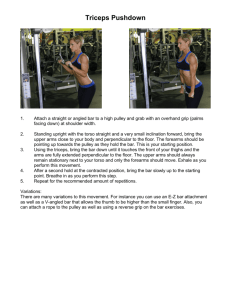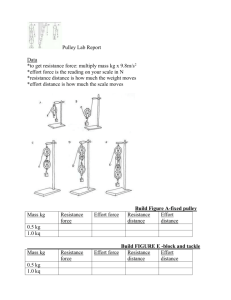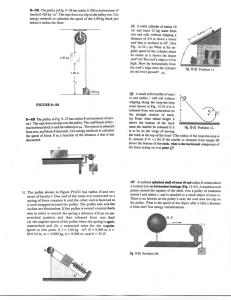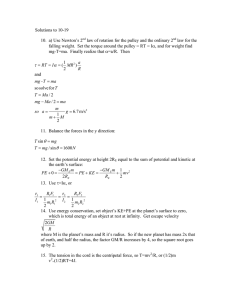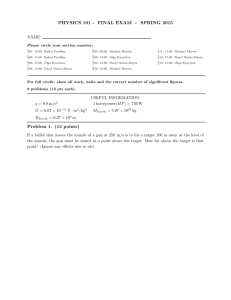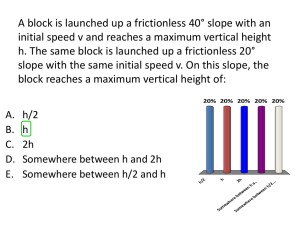Name: Hour: Unit VIII: Worksheet 2 Two frictionless gears are
advertisement
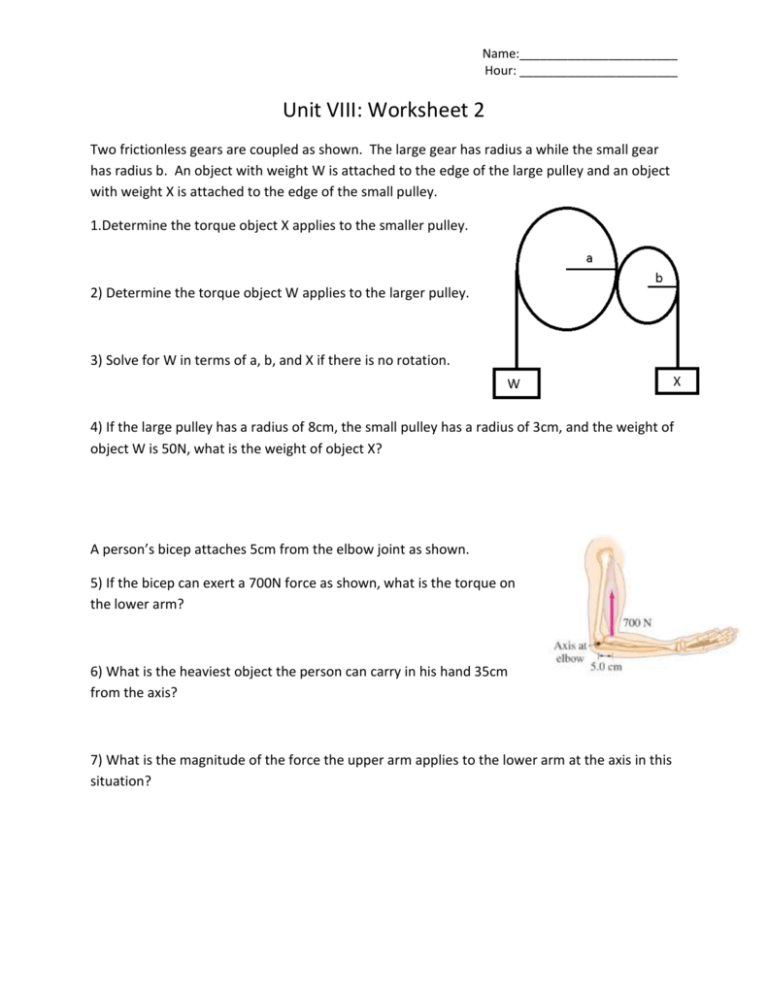
Name:_______________________ Hour: _______________________ Unit VIII: Worksheet 2 Two frictionless gears are coupled as shown. The large gear has radius a while the small gear has radius b. An object with weight W is attached to the edge of the large pulley and an object with weight X is attached to the edge of the small pulley. 1.Determine the torque object X applies to the smaller pulley. 2) Determine the torque object W applies to the larger pulley. 3) Solve for W in terms of a, b, and X if there is no rotation. 4) If the large pulley has a radius of 8cm, the small pulley has a radius of 3cm, and the weight of object W is 50N, what is the weight of object X? A person’s bicep attaches 5cm from the elbow joint as shown. 5) If the bicep can exert a 700N force as shown, what is the torque on the lower arm? 6) What is the heaviest object the person can carry in his hand 35cm from the axis? 7) What is the magnitude of the force the upper arm applies to the lower arm at the axis in this situation? Name:_______________________ Hour: _______________________ 8) Two pulleys are attached to the same axle as shown. What is the magnitude of F2 in the picture such that the pulleys are not rotating? 9) You decide to unscrew a bolt that is stuck. It requires 50Nm of torque to loosen the bolt. If the wrench is 50cm long and you push at a 75 degree angle to the wrench, what is the minimum force you must apply to unstick the wrench? A ladder of length L = 2.9 m and mass m = 21 kg rests on a floor with coefficient of static friction μs = 0.48. Assume the wall is frictionless. 10)What is the normal force the floor exerts on the ladder? 11)What is the minimum angle the ladder must make with the floor to not slip?
